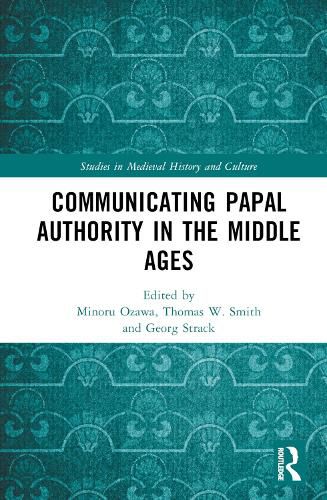Readings Newsletter
Become a Readings Member to make your shopping experience even easier.
Sign in or sign up for free!
You’re not far away from qualifying for FREE standard shipping within Australia
You’ve qualified for FREE standard shipping within Australia
The cart is loading…






This book bridges Japanese and European scholarly approaches to ecclesiastical history to provide new insights into how the papacy conceptualised its authority and attempted to realise and communicate that authority in ecclesiastical and secular spheres across Christendom. Adopting a broad, yet cohesive, temporal and geographical approach that spans the Early to the Late Middle Ages, from Europe to Asia, the book focuses on the different media used to represent authority, the structures through which authority was channelled and the restrictions that popes faced in so doing, and the less certain expression of papal authority on the edges of Christendom. Through twelve chapters that encompass key topics such as anti-popes, artistic representations, preaching, heresy, the crusades, and mission and the East, this interdisciplinary volume brings new perspectives to bear on the medieval papacy. The book demonstrates that the communication of papal authority was a two-way process effected by the popes and their supporters, but also by their enemies who helped to shape concepts of ecclesiastical power.
Communicating Papal Authority in the Middle Ages will appeal to researchers and students alike interested in the relationships between the papacy and medieval society and the ways in which the papacy negotiated and expressed its authority in Europe and beyond.
$9.00 standard shipping within Australia
FREE standard shipping within Australia for orders over $100.00
Express & International shipping calculated at checkout
This book bridges Japanese and European scholarly approaches to ecclesiastical history to provide new insights into how the papacy conceptualised its authority and attempted to realise and communicate that authority in ecclesiastical and secular spheres across Christendom. Adopting a broad, yet cohesive, temporal and geographical approach that spans the Early to the Late Middle Ages, from Europe to Asia, the book focuses on the different media used to represent authority, the structures through which authority was channelled and the restrictions that popes faced in so doing, and the less certain expression of papal authority on the edges of Christendom. Through twelve chapters that encompass key topics such as anti-popes, artistic representations, preaching, heresy, the crusades, and mission and the East, this interdisciplinary volume brings new perspectives to bear on the medieval papacy. The book demonstrates that the communication of papal authority was a two-way process effected by the popes and their supporters, but also by their enemies who helped to shape concepts of ecclesiastical power.
Communicating Papal Authority in the Middle Ages will appeal to researchers and students alike interested in the relationships between the papacy and medieval society and the ways in which the papacy negotiated and expressed its authority in Europe and beyond.